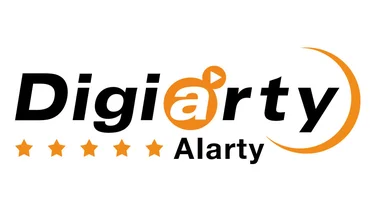To help us provide you with free impartial advice, we may earn a commission if you buy through links on our site. Learn more

If you’re in the market for the best project management software, you won’t be able to avoid hearing the names Asana and Trello, two of the most well-known and powerful tools in this arena. So, to ensure you choose the one that fits the needs of you and your company best, not to mention your wallet, we compare the two head-to-head below.
Trello vs Asana: Features
We’ll kick off by comparing what our two contenders can do. If you’ve read our full Asana review, you’ll know that it’s practically impossible to beat since it’s probably one of the most fully featured project management tools out there. From basic functions to advanced planning, Asana has it all.

As a result, Asana can be made to fit almost any company. Whether you need to track a handful of tasks with a small team, or thousands of tasks across multiple teams in a large corporation, you can do it with Asana. At its core, Asana works with lists, but users can change this on the fly and order their tasks in a timeline, Gantt chart or a kanban board.
In addition, Asana also offers some amazing advanced functionality in its upper-tier plans, such as planning people’s workloads or the ability to plan projects well into the future. All this makes Asana as flexible as the yoga pose after which it’s named.

Trello, on the other hand, is much more of a one-trick pony. And that “trick” is a great kanban board, probably the best out there. It has other functions as well (a list, a calendar, plus a few others), but they’re nowhere near as useful as the board itself – and they’re absolutely crushed by similar options offered by Asana.

However, as we explain in a bit more detail in our Trello review, the service has one other massive strength; namely the ability to plug in almost any other productivity program or app as a so-called Power-Up. All project management software can do this to some extent, but Trello takes it to another level.
Between the board and the Power-Up system, Trello can do a lot more than might appear at first glance. While it won’t beat Asana blow-by-blow, for some teams – especially those with a simplified workflow – it will prove a much better option. Price is also a consideration, as we’ll see below.
Trello vs Asana: Ease of use
First, let’s compare how both tools fare for use day to day. Trello more or less wins by default here, considering the program’s simplicity; there’s just less to learn. Still, it should be said that Trello does offer superb guidance, explaining how to set up Power-Ups, how to put together automations, and so on. It really holds your hand in the initial stages.
However, its other views aren’t as easy to navigate – they feel bolted on; not quite as slick as everything else Trello does. In addition, there isn’t much integration between different views, meaning you’ll have to move around tasks by hand, or tinker with automations to the point everything works as you’d like. In this day and age, such features should just work.
Overall, Asana is a pleasure to use; but since it offers greater functionality, this also means it’s more tricky to learn. Thankfully, it comes with some great tutorials to get started, as well as an impressive knowledge base. Asana is also extremely flexible, letting you move subdivisions around and have them reflect across different views.
It especially shines when it comes to subtasks. Trello lets you build small checklists on a card, but Asana lets you build entire webs of subtasks with just a few clicks. Although you shouldn’t overdo it for clarity’s sake, it does give Asana the edge when it comes to utility.
READ NEXT: Wrike review
Trello vs Asana: Price
When it comes to the cold hard cost of these programs, Trello and Asana are difficult to compare. This is because Trello doesn’t have much in the way of features, while Asana has them by the bucket-load. One thing is for sure, though: both offer excellent free plans with excellent flexibility. All of Trello’s main functions – the boards, the Power-Ups and the automations – can be had for free for as many users as you’d like.
Asana is a bit more stingy, offering the board, a list and a number of other doodads – enough to run a small company, we reckon, for up to 15 users. Any more than that and you’ll have to upgrade, which in the case of Asana can cost a pretty penny. Even the cheapest plan will set you back £132 per user per year, and while you do get a lot of interesting features for the money, it’s a big step up from free. We won’t even discuss the upper tier, since that has features that Trello can’t touch.
This is because Trello’s paid features are fairly modest. The standard plan – which we like – comes in at roughly £55 per user per year, and removes the few limits the free plan places on you. The next step up, called Premium, charges double for the extra views mentioned earlier; however, at that price it’s only a small jump to the cornucopia that Asana offers.
As such, Trello is one of the very few project management tools you may not want to pay for; the free plan is simply that good. In fact, if your team is small enough, then you could integrate Asana’s free functions into it and get the best of both worlds. That said, if your team has more than 15 people and Trello’s board doesn’t cut it for you, you’ll probably want to go with Asana.
READ NEXT: The best free project management software
Trello vs Asana: Final verdict
Both Asana and Trello are among the very best project management tools on the market, thanks to their flexibility and overall usefulness. For teams of modest means and needs, Trello will likely be the better pick, while companies with extensive operations and many employees will find Asana a better fit for them.
The best way to decide which of the two works best for your company’s needs is a trial run. Both offer an excellent free plan that you can use to get familiar, while there are free trials available on the paid plans, too. Asana’s trial lasts for 30 days, while Trello’s is 14 days.






